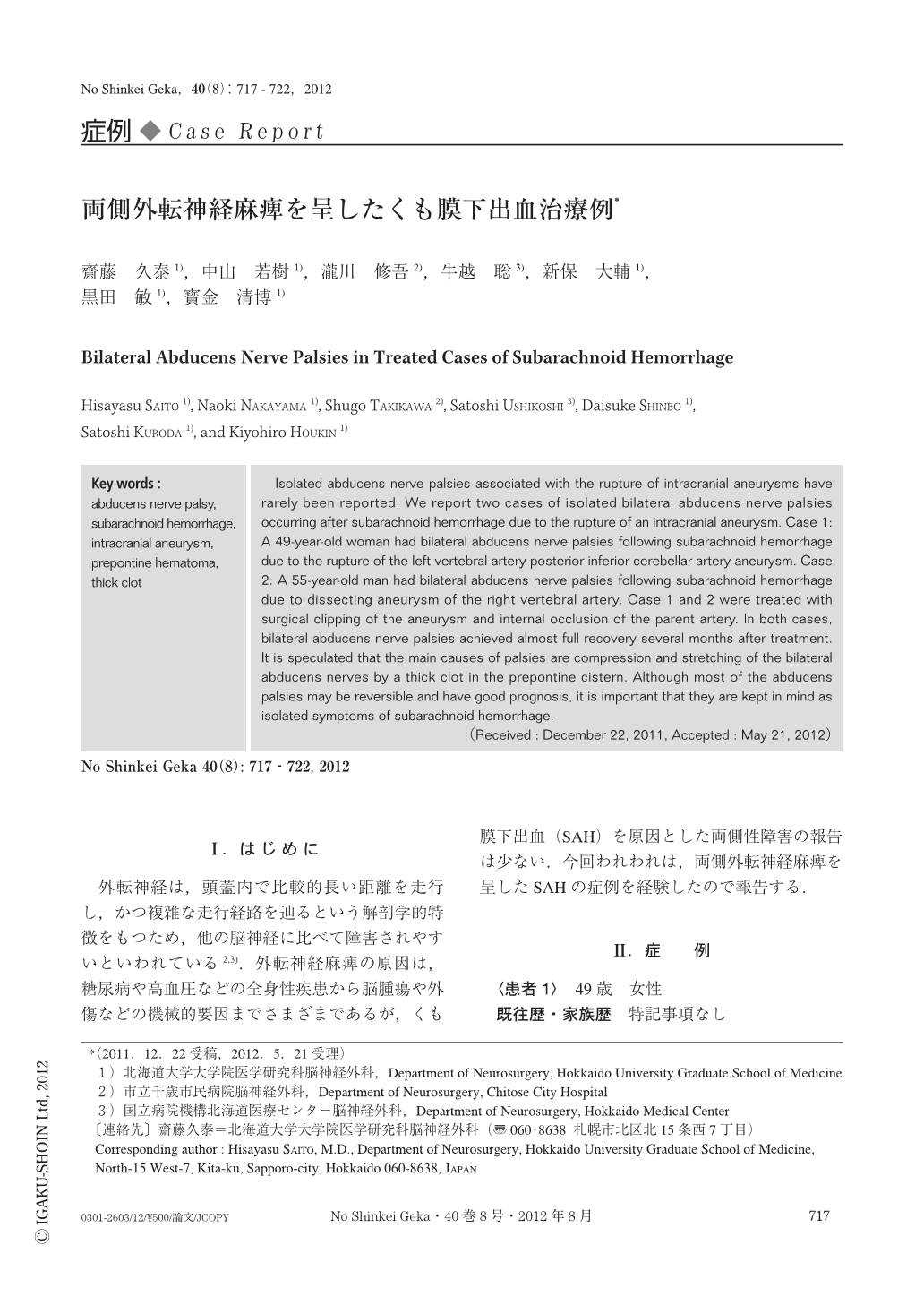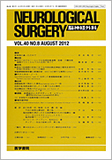Japanese
English
- 有料閲覧
- Abstract 文献概要
- 1ページ目 Look Inside
- 参考文献 Reference
Ⅰ.はじめに
外転神経は,頭蓋内で比較的長い距離を走行し,かつ複雑な走行経路を辿るという解剖学的特徴をもつため,他の脳神経に比べて障害されやすいといわれている2,3).外転神経麻痺の原因は,糖尿病や高血圧などの全身性疾患から脳腫瘍や外傷などの機械的要因までさまざまであるが,くも膜下出血(SAH)を原因とした両側性障害の報告は少ない.今回われわれは,両側外転神経麻痺を呈したSAHの症例を経験したので報告する.
Isolated abducens nerve palsies associated with the rupture of intracranial aneurysms have rarely been reported. We report two cases of isolated bilateral abducens nerve palsies occurring after subarachnoid hemorrhage due to the rupture of an intracranial aneurysm. Case 1: A 49-year-old woman had bilateral abducens nerve palsies following subarachnoid hemorrhage due to the rupture of the left vertebral artery-posterior inferior cerebellar artery aneurysm. Case 2: A 55-year-old man had bilateral abducens nerve palsies following subarachnoid hemorrhage due to dissecting aneurysm of the right vertebral artery. Case 1 and 2 were treated with surgical clipping of the aneurysm and internal occlusion of the parent artery. In both cases, bilateral abducens nerve palsies achieved almost full recovery several months after treatment. It is speculated that the main causes of palsies are compression and stretching of the bilateral abducens nerves by a thick clot in the prepontine cistern. Although most of the abducens palsies may be reversible and have good prognosis, it is important that they are kept in mind as isolated symptoms of subarachnoid hemorrhage.

Copyright © 2012, Igaku-Shoin Ltd. All rights reserved.


